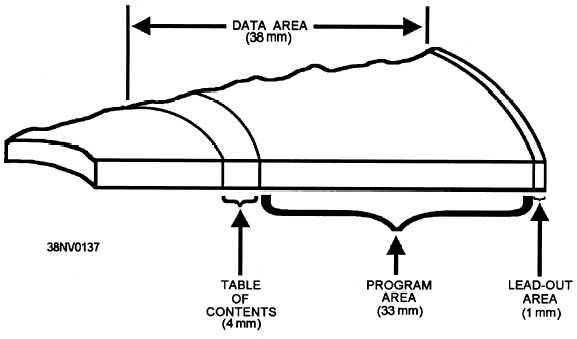Figure 11-2.—A cross section of CD-ROM with data areas defined.
beam is over a land, the light is reflected back to a
photodetector. When the laser beam is over a pit, the
light is defused and not detected by the photodetector.
The data on a CD-ROM is written in a continuous
spiral, much like the groove of a phonograph record,
and was adapted from the CD audio standard. The data
track is 0.5 micrometers wide. The space between the
turns of the track is 1.6 micrometers. This equates to a
track density of 16,000 tracks per inch (tpi) and a
maximum of 640 megabytes per disc. The actual
capacity of a CD-ROM is dependent on the mode used
to produce the disc. Two modes of recording data on a
CD-ROM are currently in use. Mode 1 writes 2,048
data bytes per sector, followed by error correction
codes. Mode 2 writes 2,336 data bytes per sector and
eliminates the error correction codes.
In chapter 2 of this manual, you saw that a disk is
divided into tracks and sectors. The disk rotation speed
is constant and data is accessed by defining the track
and sector. On a CD-ROM disc, the data is also stored
in sectors of 512 bytes. The size of the sectors on a
CD-ROM disc remains the same, regardless of the
physical location of the sector. The spiral increases in
size as it winds toward the outer edge of the disc, thus
the number of sectors per rotation increases.
Constant Linear Velocity
Constant linear velocity is the technique that the
CD-ROM drive uses to access data from a disc. To
properly read the data from the disc, the speed of the
disc must decrease as the laser moves to the outer edge
of the disc. Rotation speed of the disc while reading the
inner tracks is approximately 500 rpm. As the read head
moves to the outer edge of the disc, rotation speed
decreases to 200 rpm.
Sector addresses on CD-ROM are adaptations of
the CD audio standard and are recorded on the disc
in terms of minutes, seconds, and sector
(minute: second: sector). To find a sector, the read head
is slewed to the approximate position of the data, the
rotation speed of the disc is adjusted, and the drive reads
the position data in the header of the next sector to
determine the location of the read head. The read head
is then fine positioned to the desired location by
repeating this procedure until the proper sector is found.
This process can lead to access times of about 1 second.
Once the proper sector is found, data transfer is 150 to
300 kilobytes per second, depending on the type of
CD-ROM drive. These relatively slow access times and
data transfer rates are among the biggest problems with
CD-ROMs. Manufacturers are striving to improve
these rates and have introduced double-speed,
triple-speed, and higher multiple-speed drives.
Eight-to-Fourteen Modulation
The eight-to-fourteen modulation technique for
encoding data on a CD-ROM disc was developed to
increase the accuracy of the data read from the disc.
Each byte has a corresponding 14-bit code. When the
disc is manufactured, the data is recorded in the
eight-to-fourteen code. When the data is read from the
11-3


